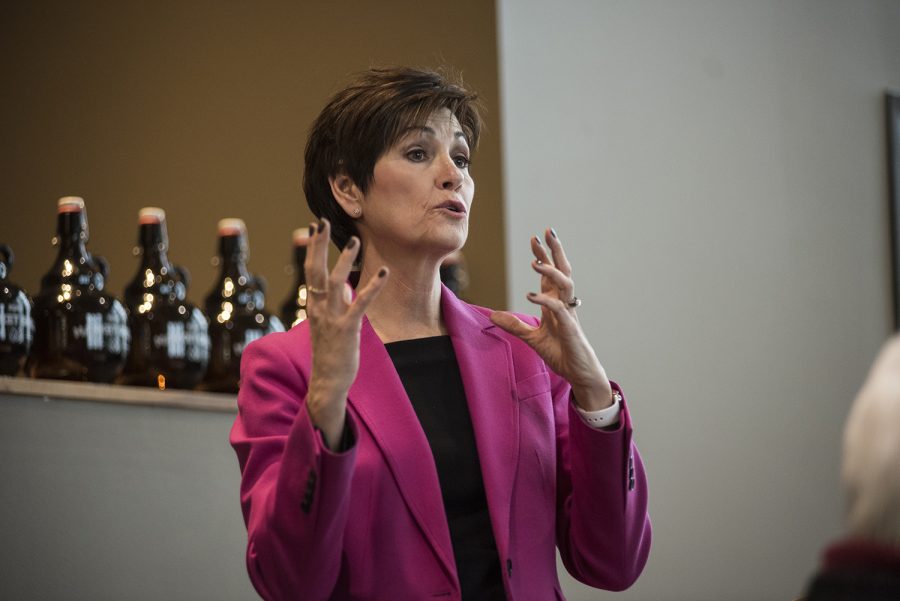Iowa governor says medical institute’s COVID-19 projection based on faulty assumptions
Gov. Kim Reynolds challenged projections from the Institute for Health Metrics and Evaluation on Wednesday, which predict more than 1,300 deaths from COVID-19 in Iowa.
Kim Reynolds talks at Hy-Vee in Coralville during her 99 Counties tour on Thursday, April 5, 2018.
April 1, 2020
Iowa Gov. Kim Reynolds questioned the accuracy of COVID-19 projections from the Institute for Health Metrics in a press conference Wednesday, saying the forecast doesn’t take into account mitigation measures already taken in Iowa.
The institute, based at the University of Washington, has projections for medical resource needs and COVID-19 deaths by state. As of Wednesday, the model for Iowa projects more than 1,300 total deaths from COVID-19, and expects resource usage to peak on April 30. The death projections nearly doubled from 777 predicted deaths in the model as of Tuesday.
The model says that nonessential services and educational facilities have not been closed in Iowa, but Reynolds and Iowa Department of Public Health deputy director Sarah Reisetter said it doesn’t incorporate similar orders.
While Reynolds hasn’t made an official order to close K-12 schools, she has recommended schools close until at least April 13, and most schools are following that recommendation. Colleges and universities across the state have also transitioned to online learning, and Reynolds has closed several nonessential businesses and services.
“That particular model does not take into account the measures that have been taken,” Reisetter said.
Reynolds said she expects the projection would be different if those measures were taken into account.
She has also indicated that a new declaration may come Thursday potentially recommending that schools and businesses remain closed for a longer time period as Iowa inches closer to its surge of COVID-19 cases.
“The model that’s out there does not reflect a lot of the mitigation practices that we put in place, and so that will have some bearing on the numbers,” she said.
The model also predicts cases and resource usage to peak on April 30, contrasting the Iowa Department of Public Health’s own predictions that the state will see a peak in two to three weeks.
Reisetter said the model doesn’t reflect current information on bed availability, and she stood by the Iowa Department of Public Health’s projection of an earlier peak.
“If everybody in Iowa will follow the social distancing, stay home as much as possible … if everybody follows those procedures that we’ve been asking them to do, that the governor has been asking them to do, then our health-care system will be able to withstand the impact of this disease when we do see that peak in the next two to three weeks,” Reisetter said.



